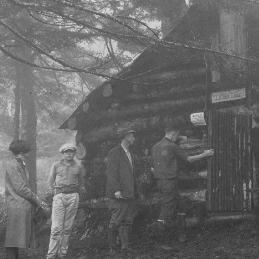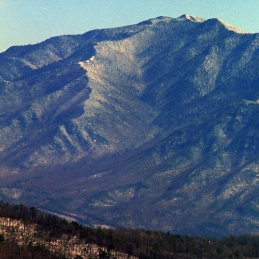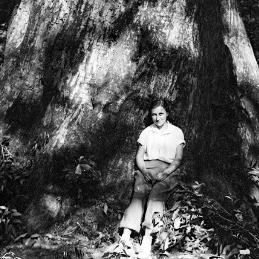Browse
"Do You Want to Be Clear About Who's Who?" ATBI Quarterly 1, no. 1 (2000): 3.
"Do Appalachian Herbaceous Understories Ever Recover from Clearcutting?" Conservative Biology 6, no. 2 (1992): 196-201.
"Diversity of Scale Insects (Homoptera: Coccoidea) in the Great Smoky Mountains National Park." Annals of the Entomological Society of America 87, no. 2 (1994): 225-230.
"Diversity and Taxonomic Review of Leptusa Kraatz (Coleoptera: Staphylinidae: Aleocharinae) from Great Smoky Mountains National Park, U.S.A., With Descriptions of Four New Species." Zootaxa, no. 2662 (2010): 1-27.
"Diversity and Density of the EM Fungal Community Present in High Elevation Fraser Fir Forests of Great Smoky Mountains National Park." North American Fungi 9, no. 1 (2014): 1-21.
"Diurnal Activity, Avian Predation, and the Question of Warning Coloration and Cryptic Coloration in Salamanders." Herpetologica 31, no. 3 (1975): 252-255.
"Disturbance of the herbaceous layer after invasion of an eutrophic temperate forest by wild boar." Nordic Journal of Botany 34, no. 1 (2016): 120-128.
"Disturbance and Vegetation Response in Relation to Environmental Gradients in the Great Smoky Mountains." Vegetatio 55, no. 3 (1984): 129-139.
"Distributional Notes on Lauxaniidae Mostly from the Great Smoky Mountains National Park (Diptera)." Entomological News 58, no. 3 (1947): 72-73.
"The Distribution of Tradescantia in the Eastern Tennessee Region." Journal of the Tennessee Academy of Science 13, no. 4 (1938): 253-258.
"The Distribution of the Fungus, Basidiobolus Ranarum Eidam, in Fish, Amphibians, and Reptiles of the Southern Appalachian Region." Transactions of the Kansas Academy of Science 80, no. 1-2 (1977): 75-77.
"Distribution of Microtus chrotorrhinus, with Description of a New Subspecies." Journal of Mammology 13, no. 12 (1932): 155-158.
"Distribution of Lactarius in the High-Elevation Forests of the Southern Appalachians." Mycologia 78, no. 1 (1986): 80-85.
"Distribution of Karyotypes of the Cryptocercus punctulatus Species Complex (Blattodea: Cryptocercidae) in Great Smoky Mountains National Park." Journal of Insect Science 17, no. 3 (2017): 69.
"Distribution of Karyotypes of the Cryptocercus punctulatus Species Complex (Dictyoptera: Cryptocercidae) in the Southern Appalachians: Relation to Habitat and History." Annals of the Entomological Society of America 95, no. 3 (2002): 276-287.
"The Distribution of Heath Balds in the Great Smoky Mountains, North Carolina and Tennessee." Journal of Vegetation Science 12, no. 4 (2001): 453-466.
"Distribution of Fallout and Natural Gamma Radionuclides in Litter, Humus and Surface Mineral Soil Layers under Natural Vegetation in Great-Smoky-Mountains, North-Carolina-Tennessee." Health Physics 18, no. 5 (1970): 479-489.
"Distribution of Certain Birds in the Southeastern United States." The American Midland Naturalist 43, no. 3 (1950): 605-626.
"The Distribution of Ant Species in Tennessee With Reference to Ecological Factors." Annals of the Entomological Society of America 31, no. 2 (1938): 267-308.
"Distribution of a Rare Salamander, Eurycea Junaluska: Implications for Past Impacts of River Channelization and Impoundment." Copeia 4 (2007): 952-958.
"Distribution and Ecology of Protostelids in Great Smoky Mountains National Park." Mycologia 101, no. 3 (2009): 320-328.
"Distribution and Ecology of Dictyostelid Cellular Slime Molds in Great Smoky Mountains National Park." Mycologia 98, no. 4 (2006): 541-549.
"Dispersal of Brook Trout in Rehabilitated Streams in Great Smoky Mountains National Park." Journal of the Tennessee Academy of Science 60, no. 1 (1985): 1-4.
"Disentangling the Risks: Parent Criminal Justice Involvement and Children's Exposure to Family Risks." Criminology & Public Policy 5, no. 4 (2006): 677-702.
















































